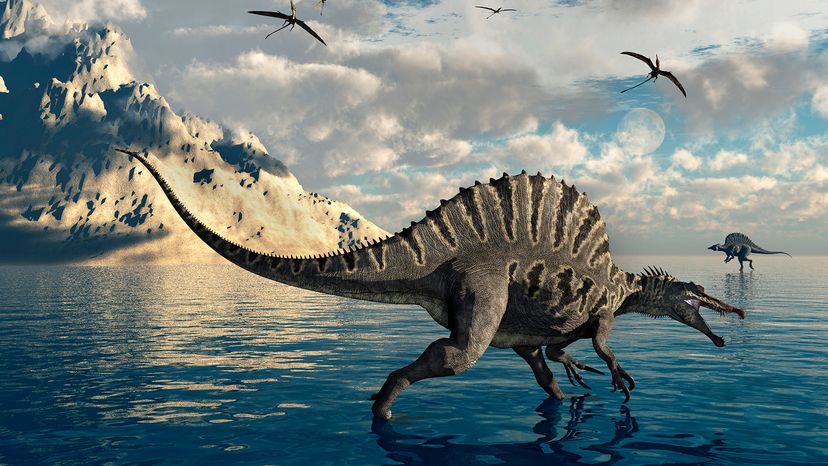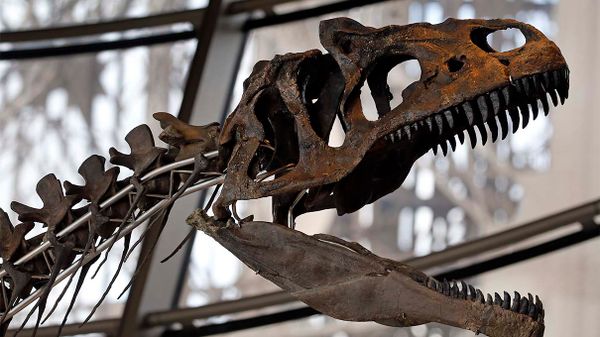Since the 1980s, experts have been wondering if this giant predatory dinosaur was amphibious, sticking largely to aquatic habitats. The debate thickened in 2014.
For prehistoric scholars, Spinosaurus has been a very elusive dinosaur. Its fossils are rare, and those that are found (Spinosaurus skull bones, tail vertebrae, limb bones) tend to be fragmented or incomplete, making skeletal reconstruction that much more difficult.
So when a load of fresh information was announced in 2014, natural history fans got pretty excited. Paleontologist Nizar Ibrahim and his colleagues wrote a now-famous paper describing the partial skeletons of at least two individual Spinosaurus that were found in Morocco.
Using these bones, Ibrahim's team reinterpreted the way Spinosaurus might have looked and behaved. Scientists used to assume that, like most carnivorous dinosaurs, the animal's hind legs were significantly longer than its arms.
But upon reviewing the new specimens, Ibrahim and his team concluded that Spinosaurus was a short-legged giant — a weird-looking beast with an estimated body length of 50 feet (15.5 meters) and disproportionately small hind limbs.
Such a creature seemed ill-suited for walking around on two legs over dry land. Pointing to its weird body shape (along with some other features), Ibrahim and his co-authors said Spinosaurus was a semiaquatic predator who swam after fish in its marshy African habitat 97 million years ago.
A new paper calls this into question. Our friend Spinosaurus may have had an affinity for waterways, but according to a series of computer simulations, it had relatively poor aquatic locomotion; basically, it was a mediocre swimmer.


